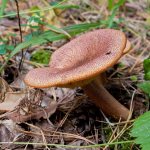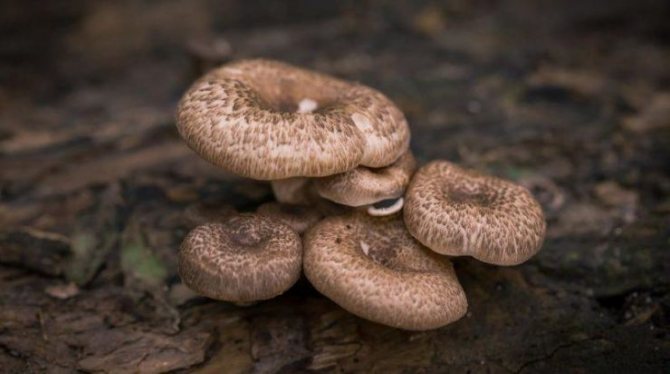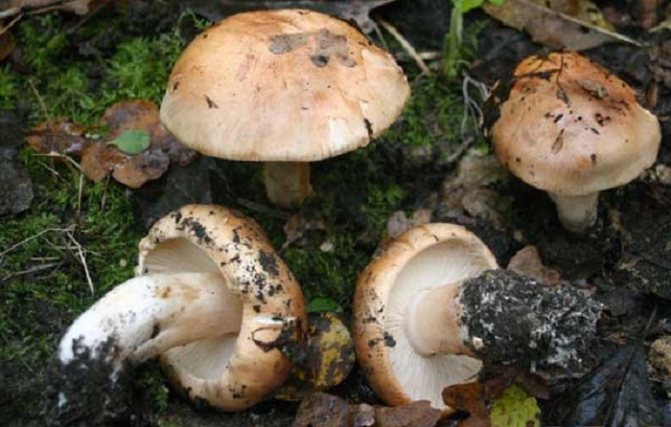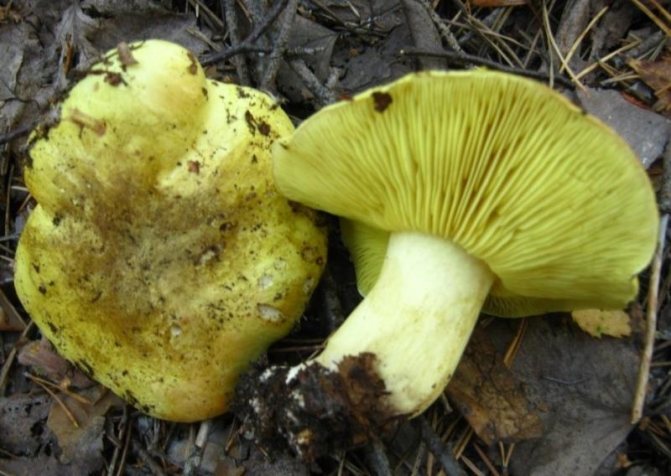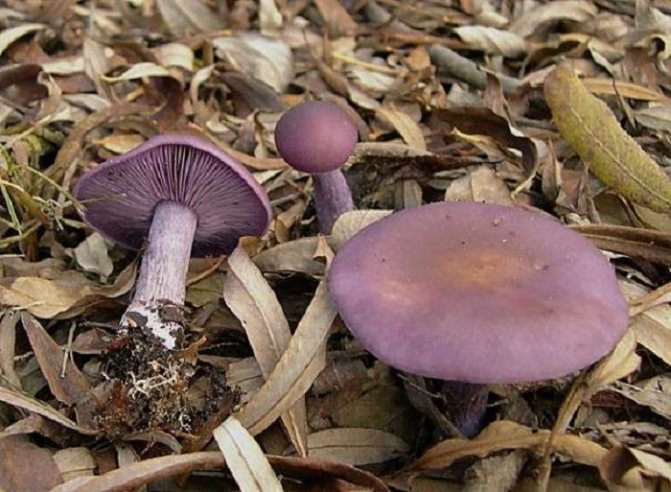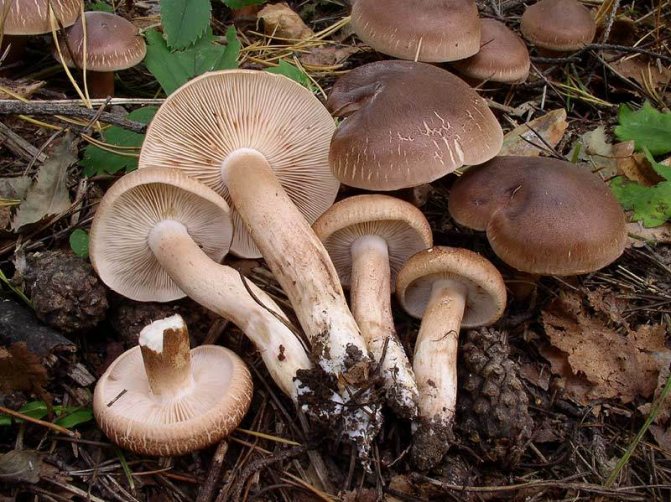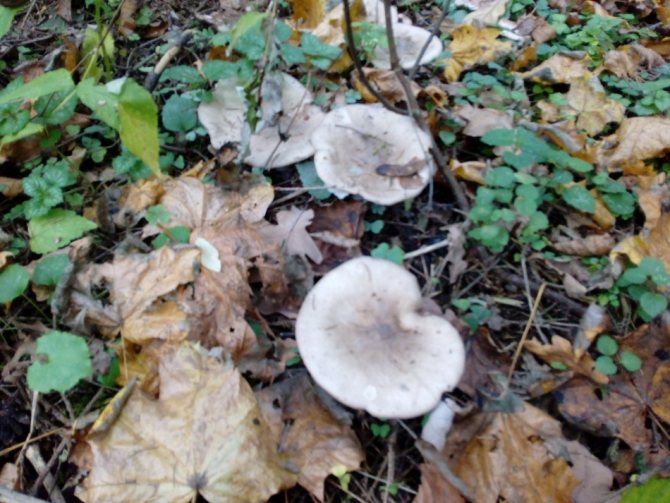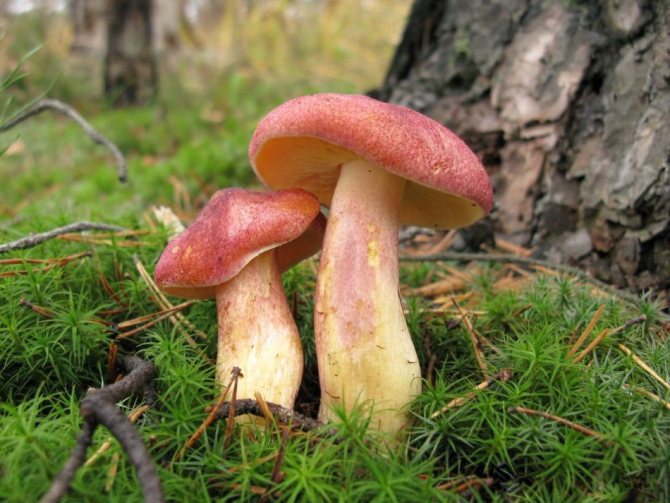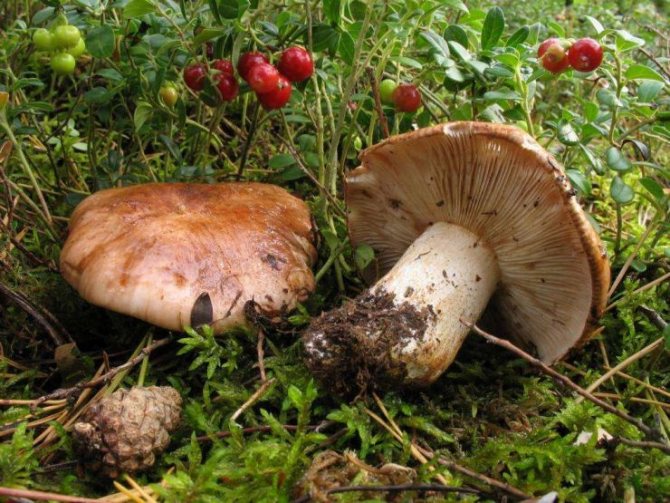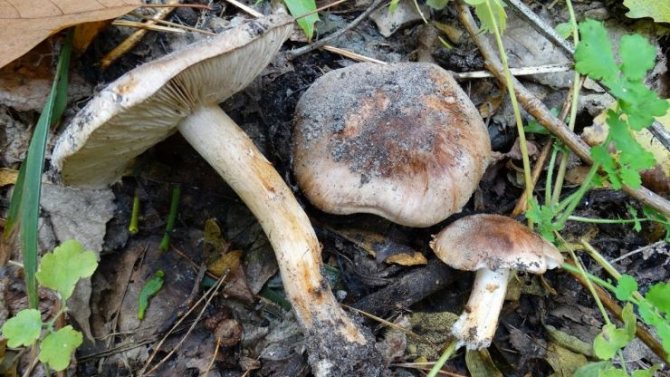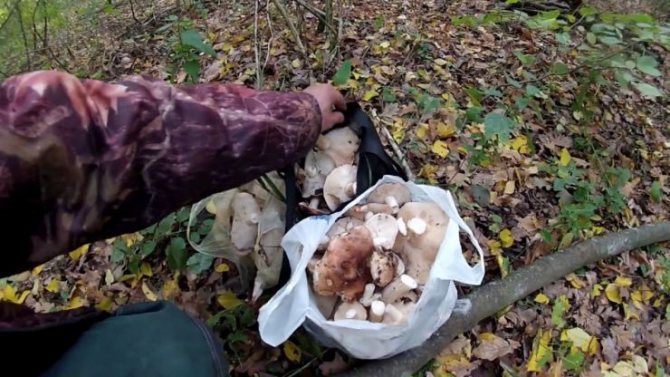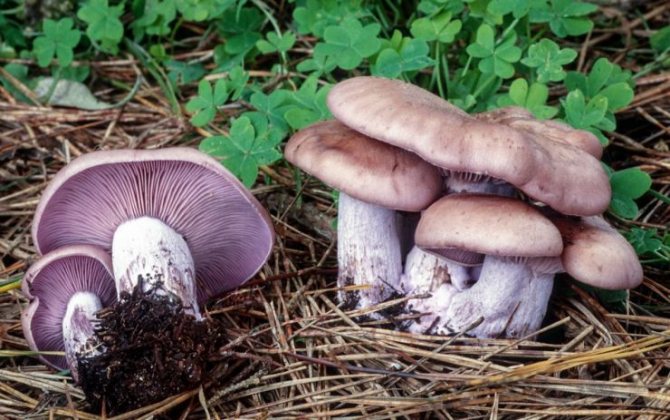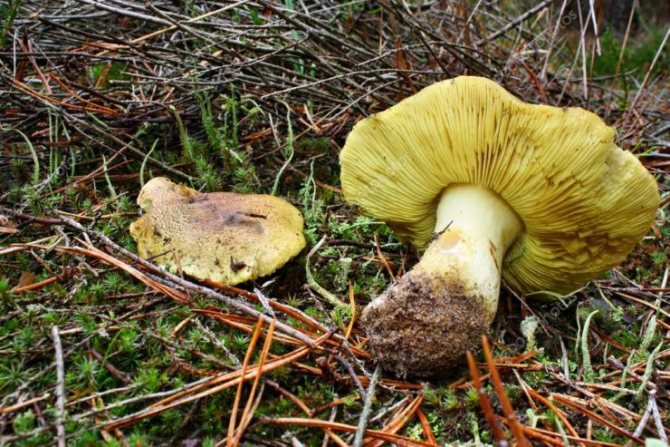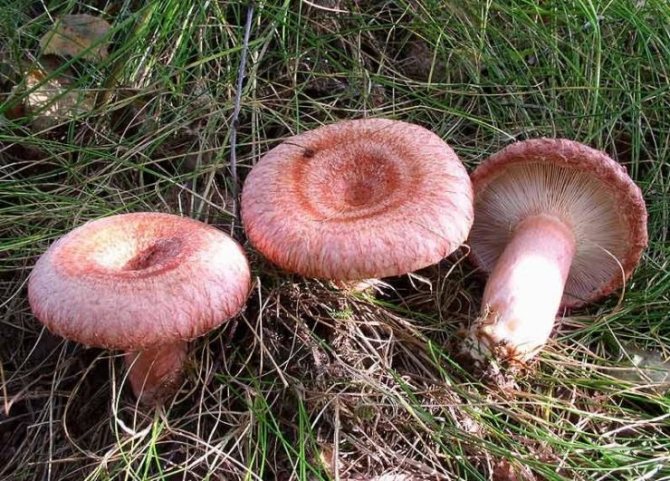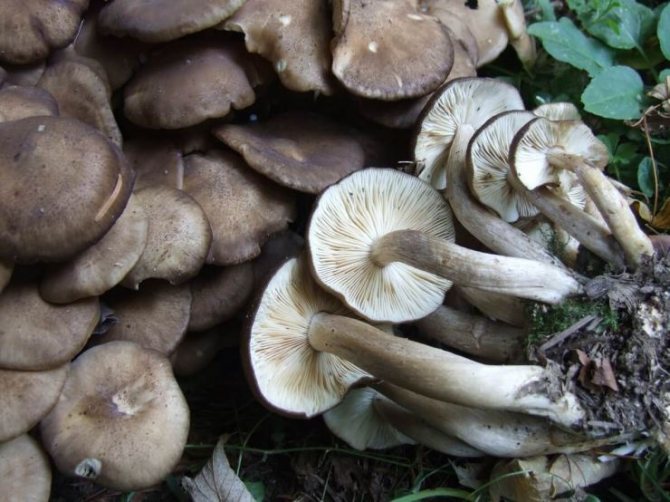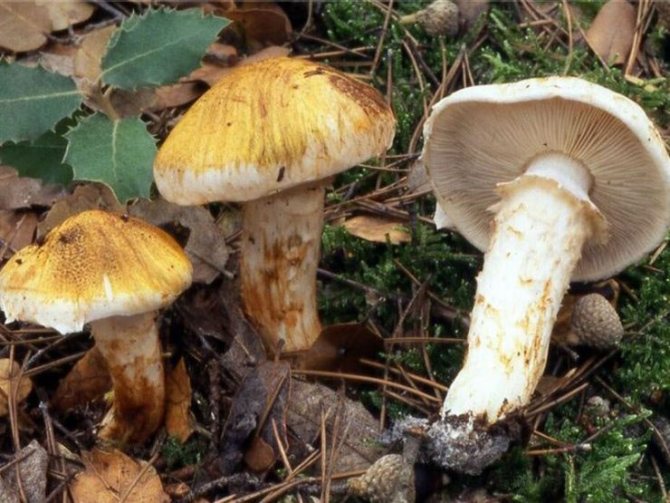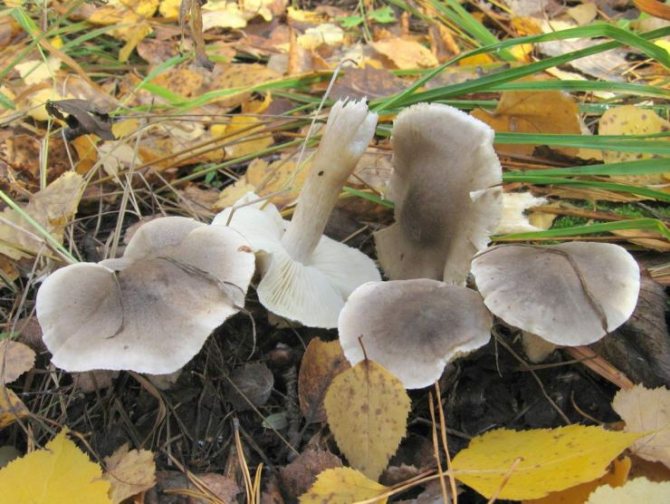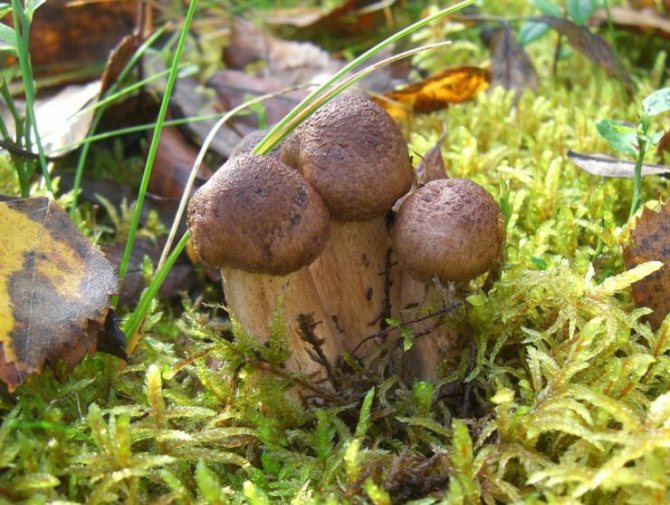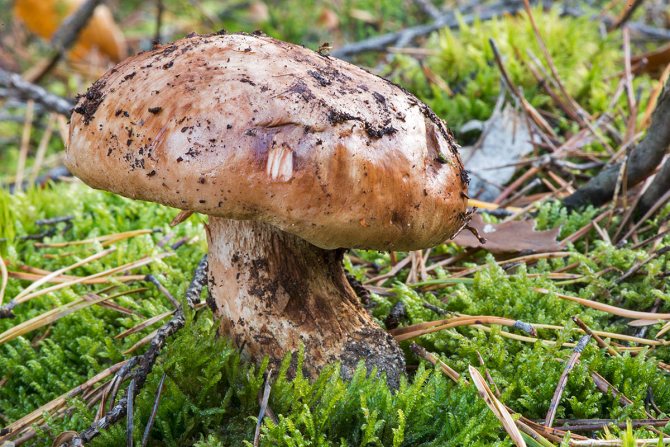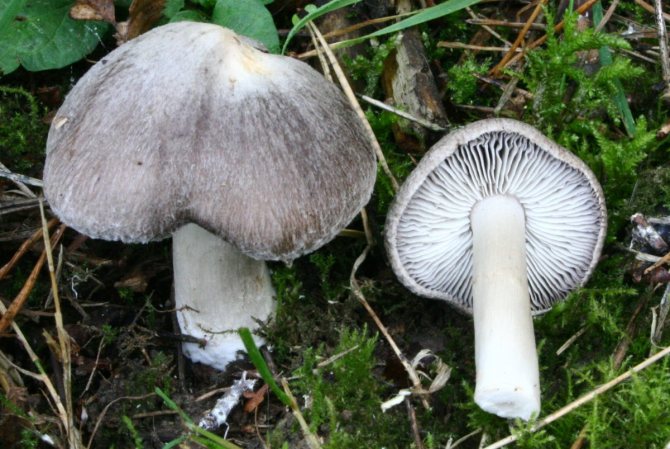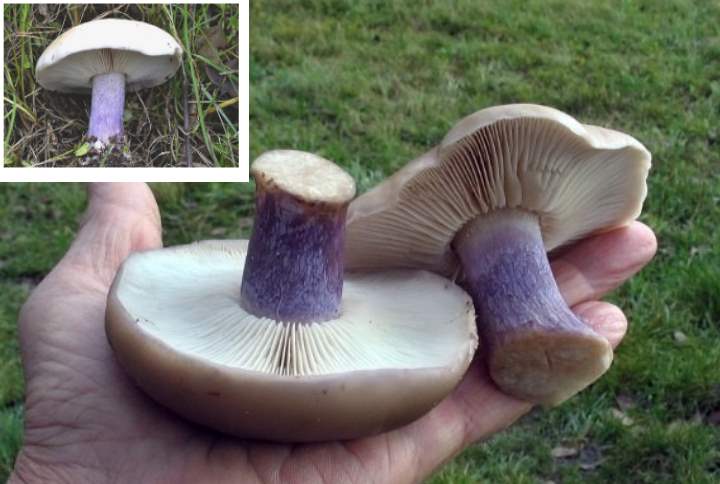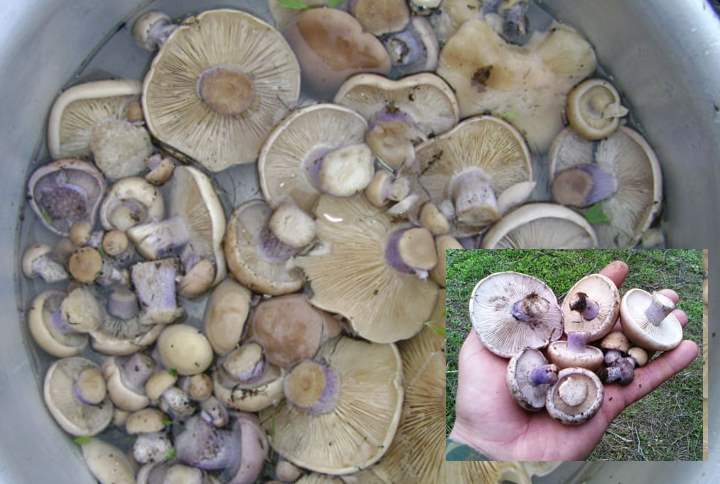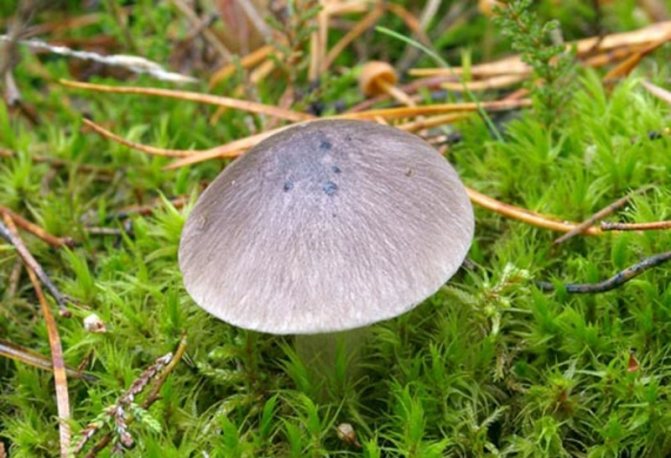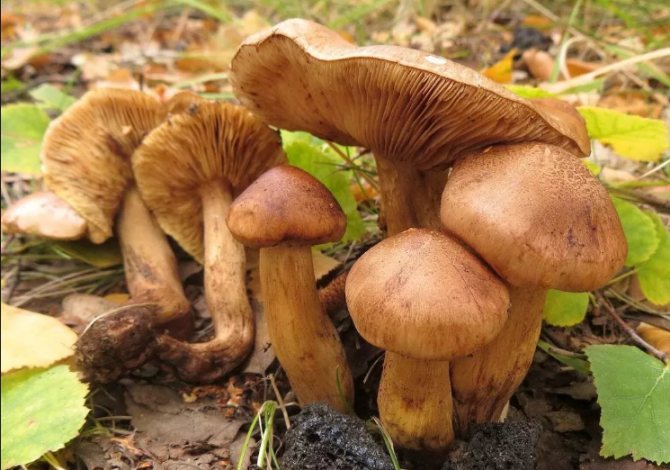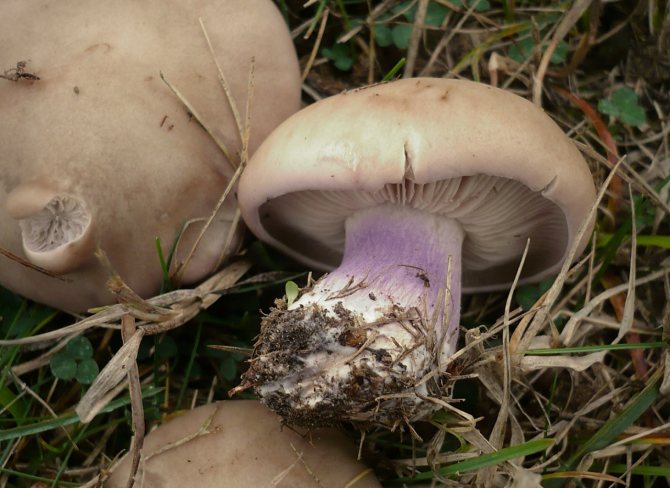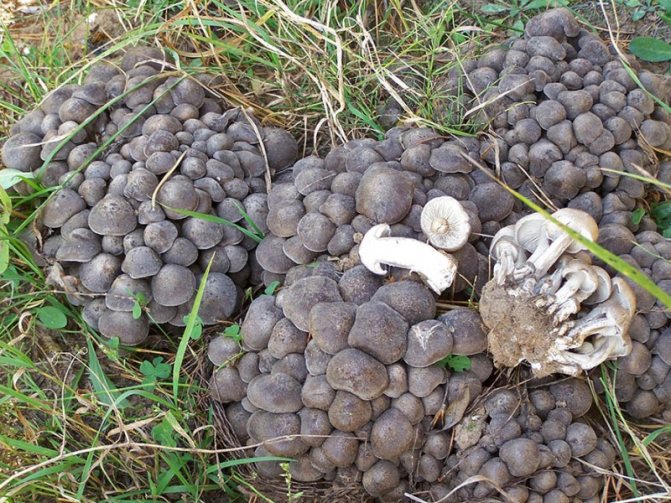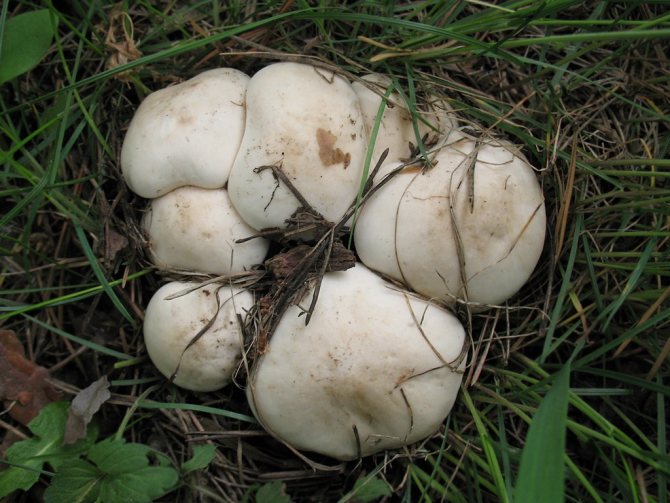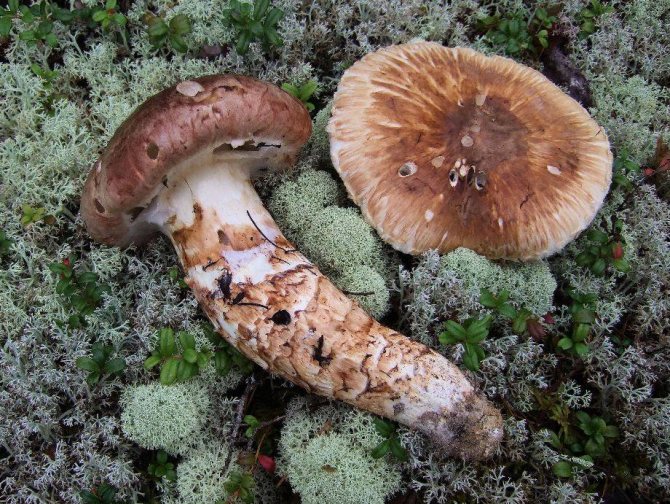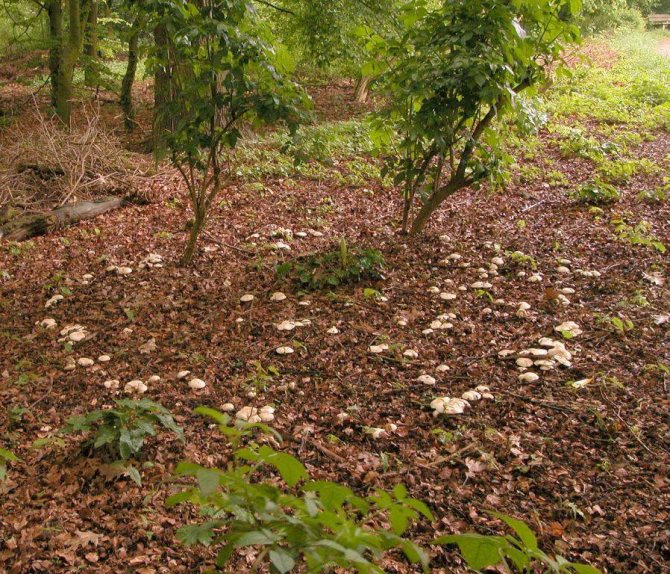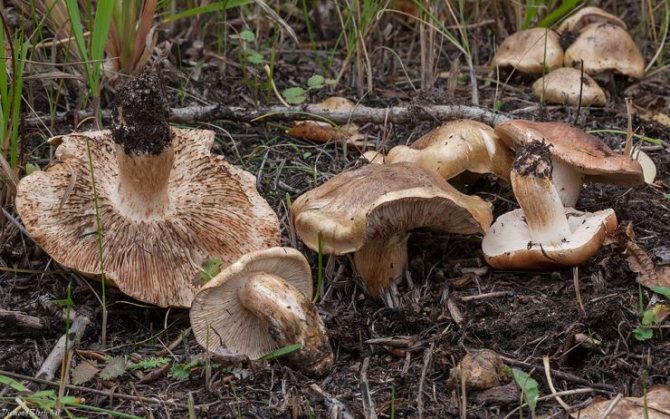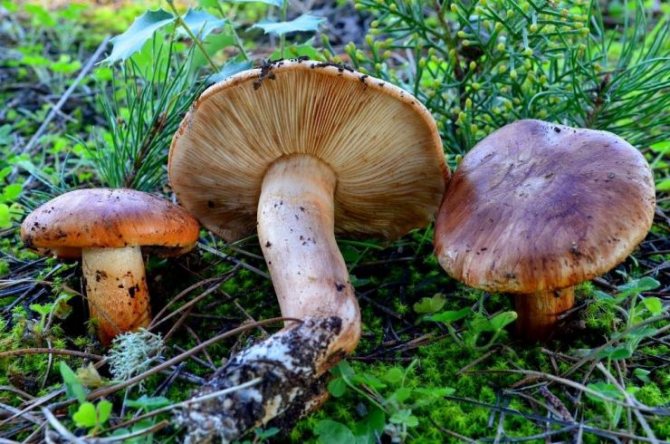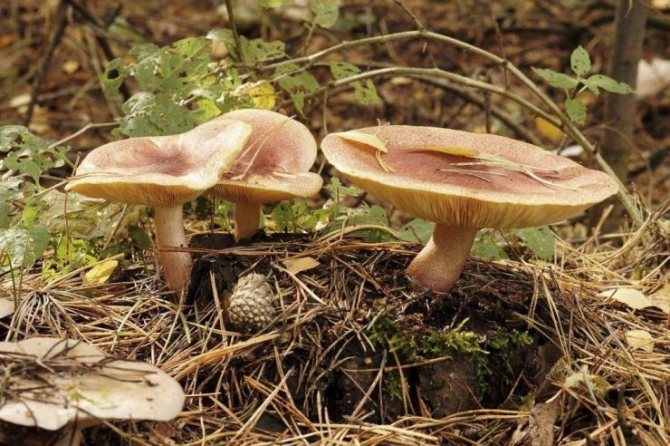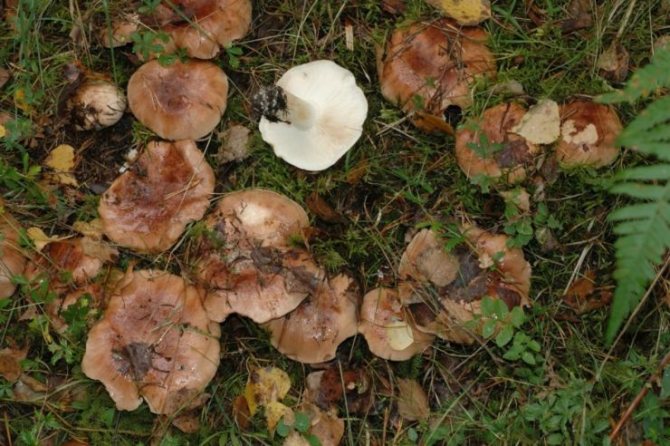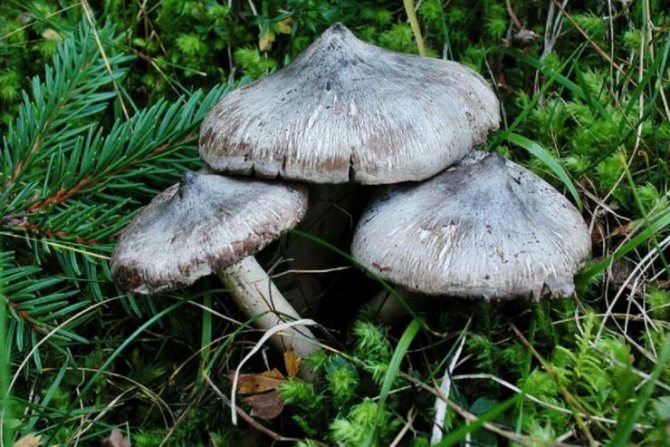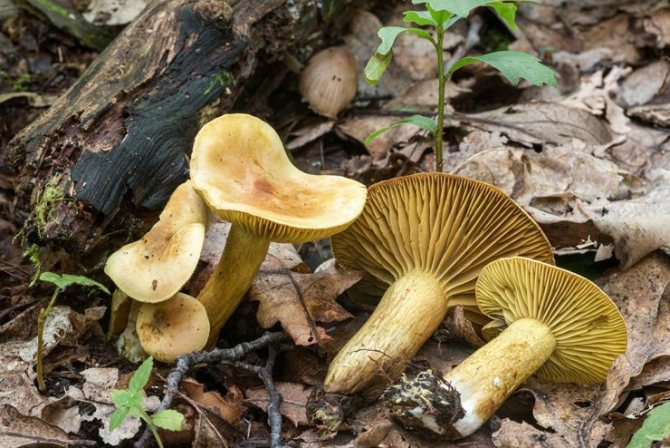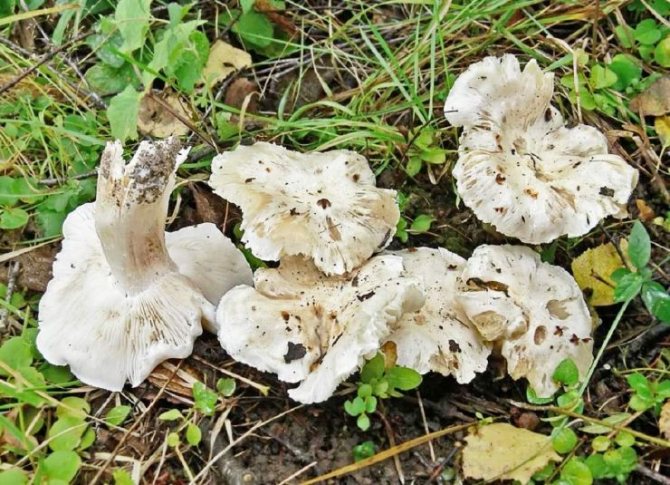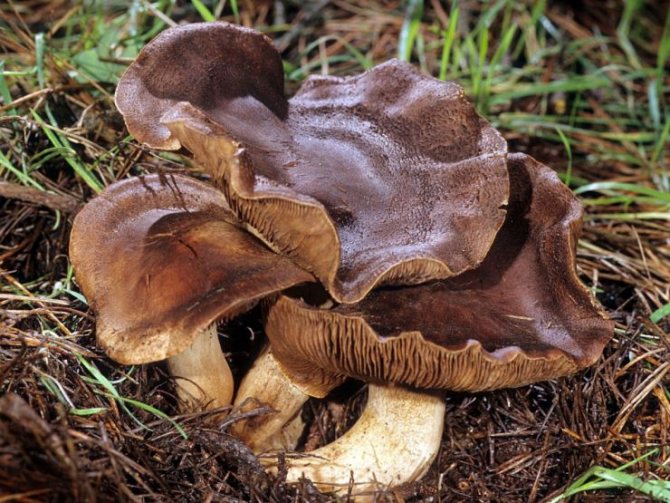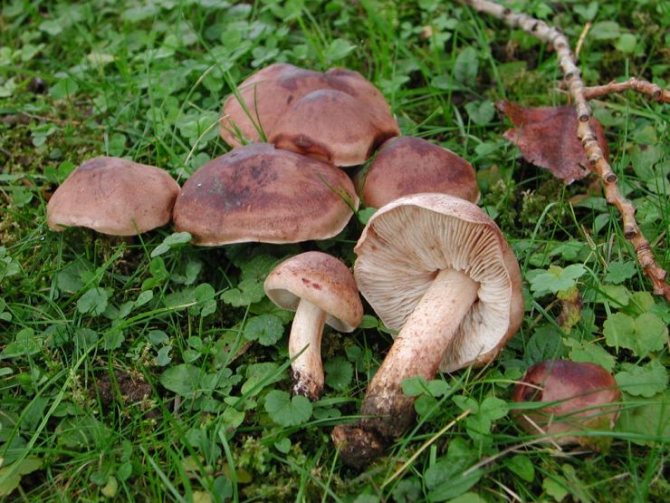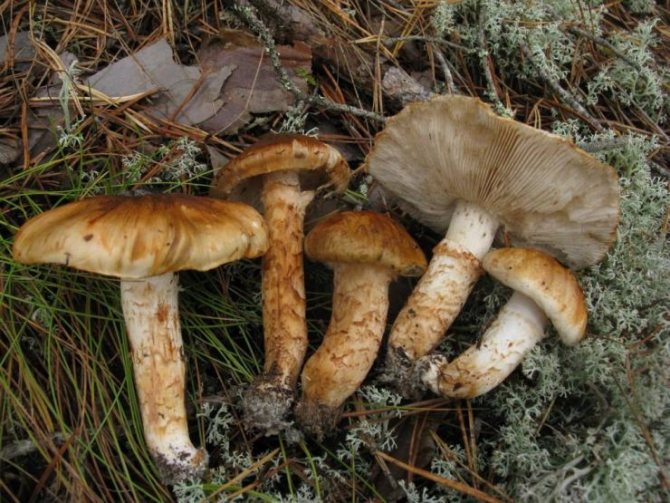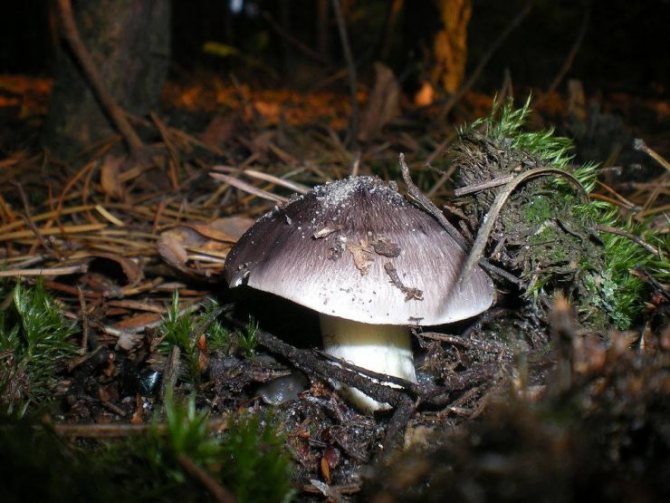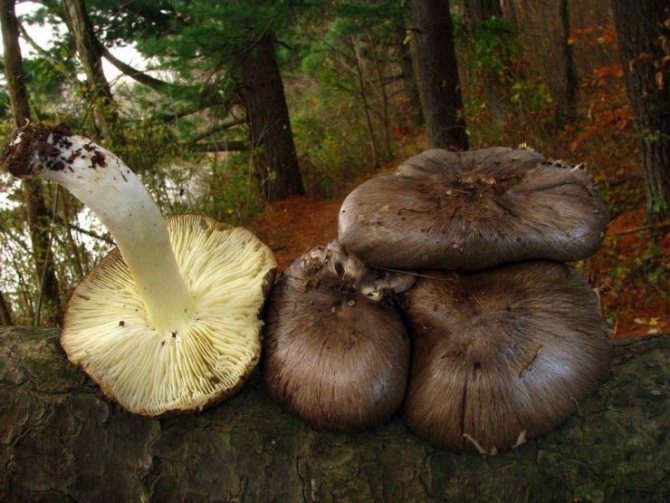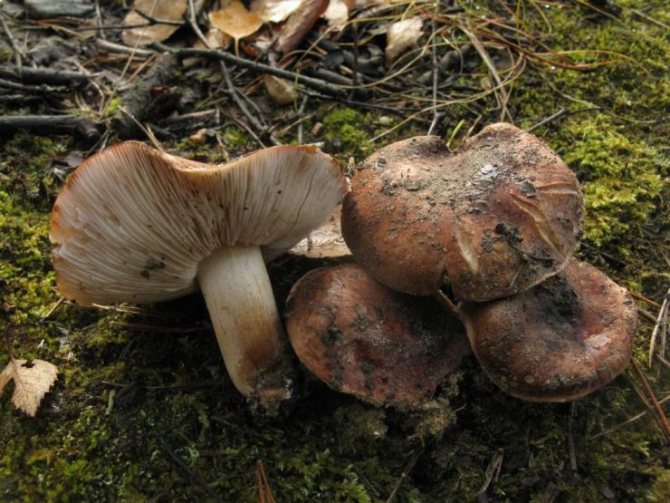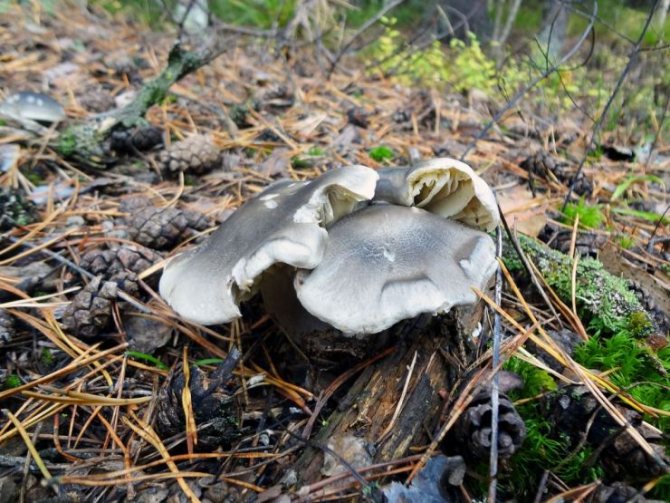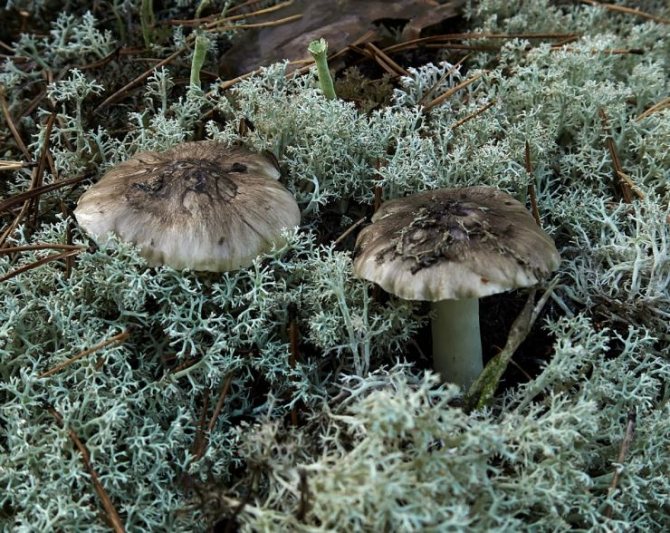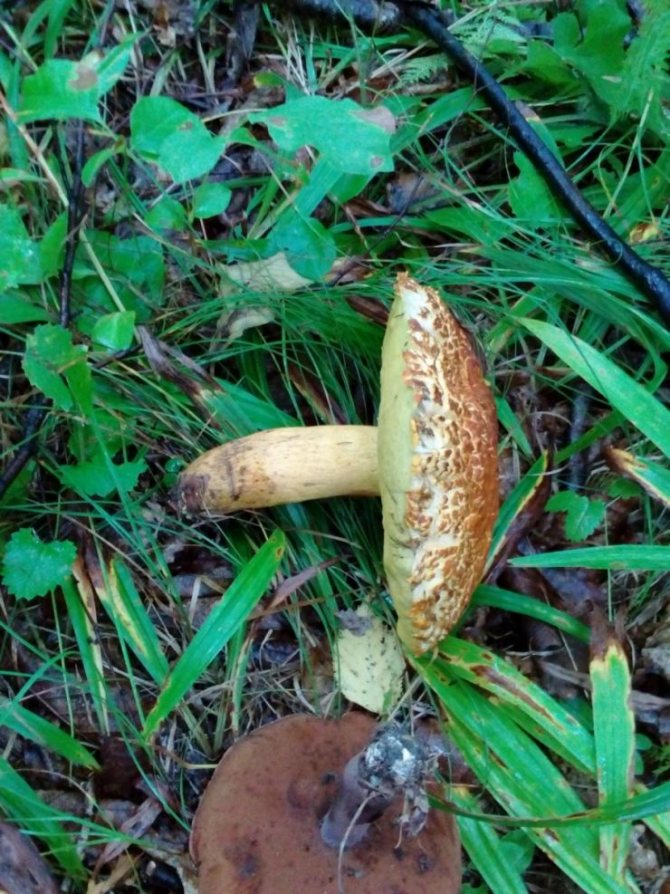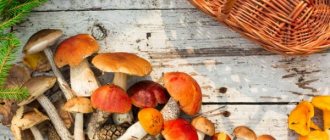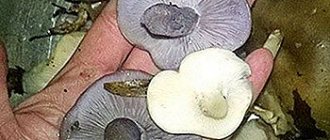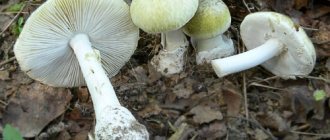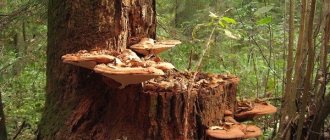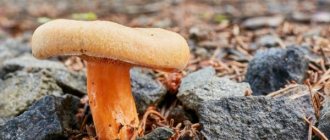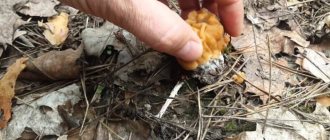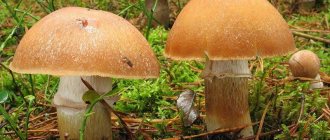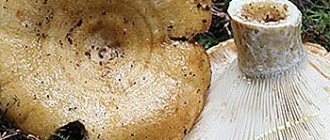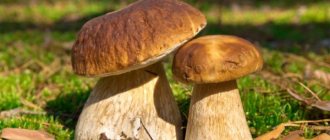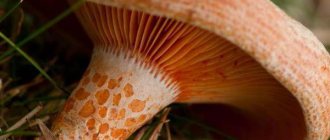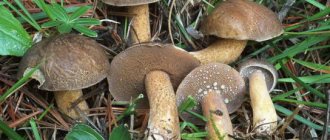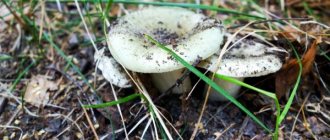Encyclopedia "Mushroom-Info" Edible mushrooms Rows Mushroom lilac-footed row: photo and description, places and season of collection
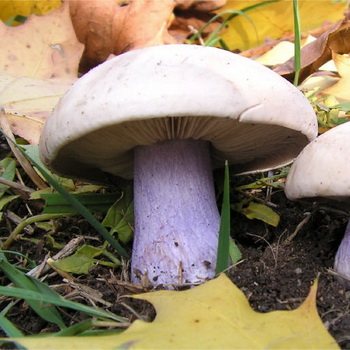
Sometimes naturally occurring living organisms can acquire strange color variations. The leaves of some plants have a red or yellow tint. And some species of animals are capable of drastically changing color in order to adapt to their environment. It turns out that among the mushrooms there are also solitary specimens with a rather funny color. For example, this applies to the edible mushroom of the lilac-footed row (lepista saeva). In addition, in addition to its unusual color, it has several more Latin names.
In common people, the purple-legged ryadovka is called: ryadovka blue leg, ryadovka blue leg, ryadovka two-color and mushroom blue root.
The lilac-footed mushroom is considered an edible fruiting body, although little known in the circle of mushroom pickers. These fruiting bodies got their name for the fact that they grow in rows, closely clinging to each other. Sometimes one can observe that one mushroom completely or partially covers the cap of its "comrade".
What do the rows look like?
Hat
Depending on the type, mushroom caps have significant external differences. In young shoots, the caps can be round, cone-shaped or bell-shaped. As they grow, they all straighten out and become flat. However, in one variety, the edges of the cap will be wavy, in the other they will be turned up, in the third they will be even.
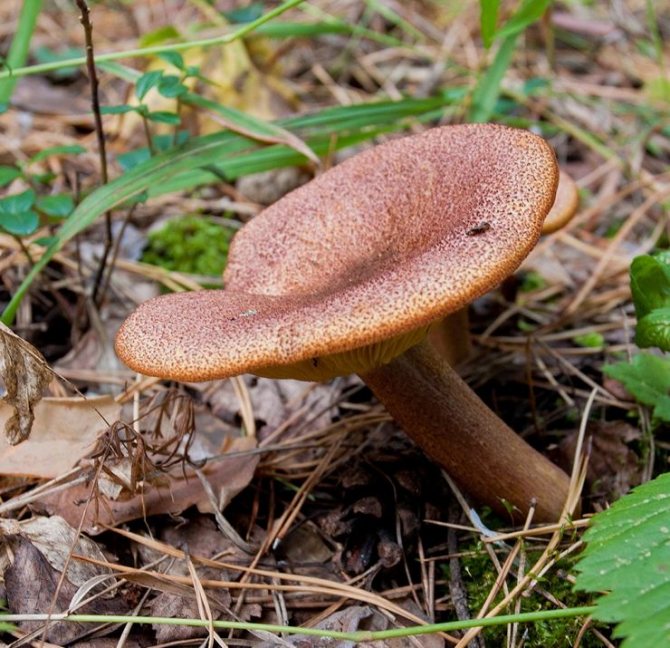

Each row has its own head diameter. Sizes range from 3cm to 20cm.
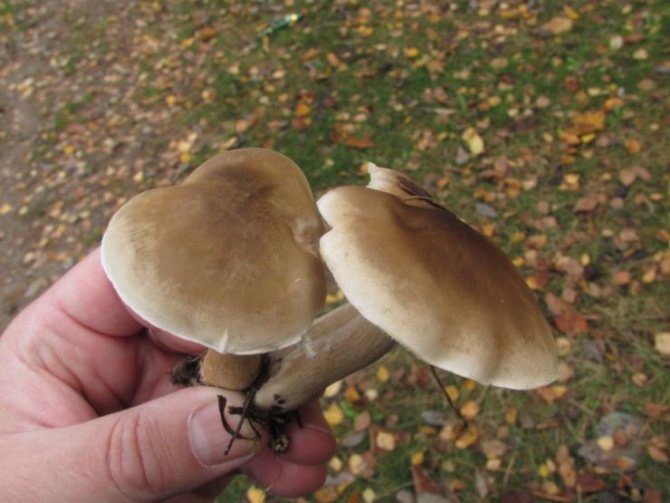

The surface of the cap can be smooth and slimy, dry and velvety, scaly, fibrous. The structure is made up of specific features.
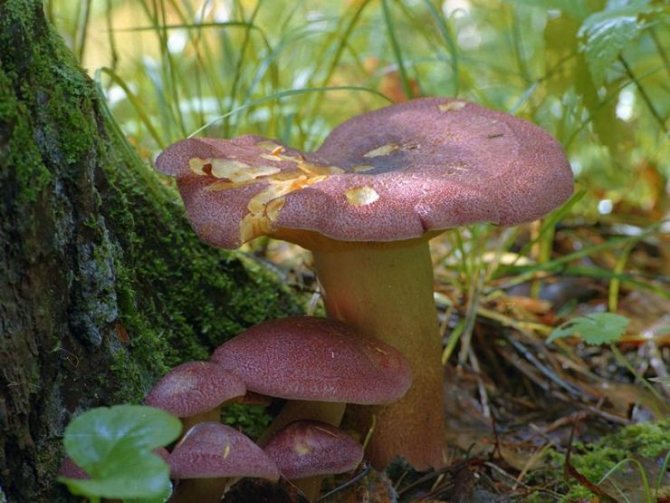

Color is also based on belonging to a particular species. It can be white, brown, yellow, greenish, gray.
Leg
Leg thickness ranges from 7 mm to 2 cm. Height - from 3 to 10 cm.
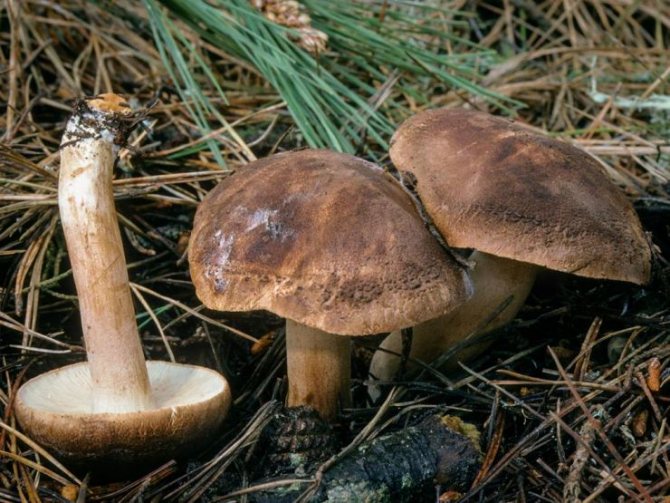

Based on the species, the following forms of legs are distinguished: straight, conical with an extension at the bottom or top, clavate.
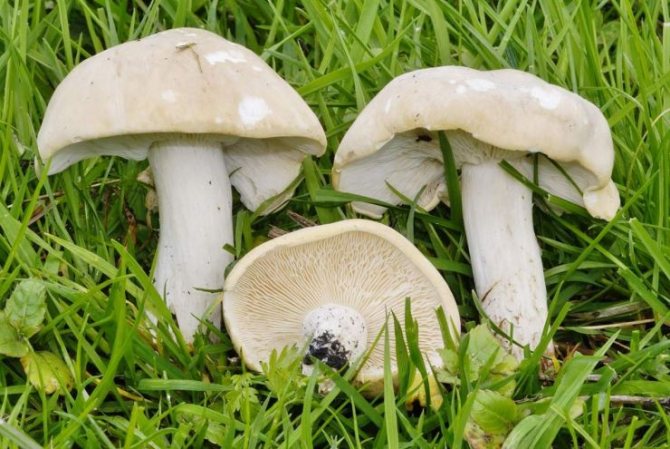

The texture can be smooth and silky, velvety, scaly.
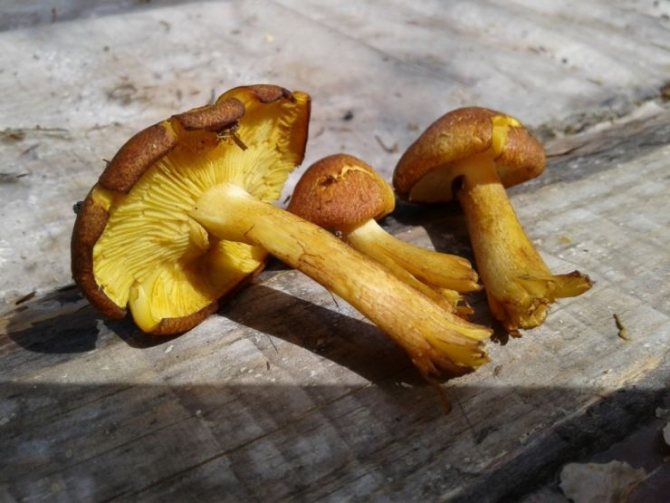

The leg is painted white or is identical to the color palette of the cap.
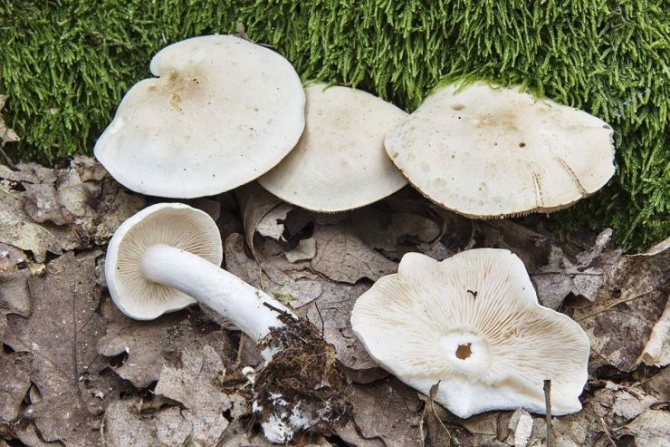

Methods for making blue feet
After collecting and transporting the mushrooms, the blue legs must be processed as quickly as possible. They need to be kept in salt water for some time to eliminate insects that may be in the mushrooms. The bruises should be pre-cleaned.
Then they need to be washed under running water, boiled for 15 minutes, and drained. After that, they can be used to prepare various dishes.
Pickled blue feet
Blue feet are often pickled. Mushrooms prepared in this way are truly a delicacy product, as they have an unusual, pleasant taste.
To cook pickled blue feet, you need:
- Boil peeled mushrooms (1 kg) for 20 minutes.
- Throw in a colander, wait until the water is completely drained from the mushrooms.
- Pour a liter of water over the blue legs, put on fire, bring to a boil.
- When the water boils, add 2 tablespoons of coarse salt, a few leaves of laurel, 12 black peppercorns.Also, if available, you can add a few oak or currant leaves - they will give a special taste and aroma to the finished product.
- Boil mushrooms with spices for 10 minutes over low heat.
- Take 2 cloves of garlic, chop, add to the mushrooms along with two tablespoons of vinegar.
- Boil everything together for 7-10 minutes.
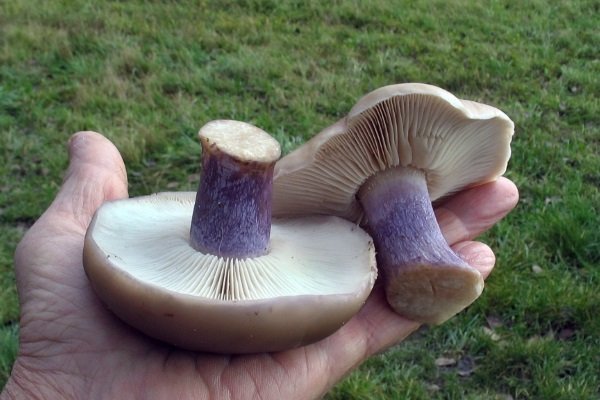

Pour the mushrooms together with the brine into sterilized jars, close, put in a warm place until they cool.
You can also cook dishes for a full lunch or dinner from blue feet - first, second, salads.
Bluefoot soup
To prepare the soup, you need to take 500 g of mushrooms, one chicken fillet, 3 potatoes and 2 onions, medium-sized carrots, one bell pepper. You will also need salt, ground black pepper, bay leaf.
Soup with blue feet is prepared in this way:
- Mushrooms are cleaned, washed, boiled in salted water for half an hour.
- Fillets are cut into small cubes.
- Vegetables are peeled and cut: onions - into small cubes, potatoes - into cubes, peppers - into thin strips.
- Grate carrots.
- Onion is fried in oil until transparent, then carrots are added to it, brought to a golden color.
- The liquid in which they were cooked is drained from the blue feet, and poured with new water, chicken and potatoes are added, and put on fire.
- Boil the soup for 20 minutes. Fried vegetables and peppers are added 10 minutes before the end.
- Add salt, pepper, boil for a couple of minutes and turn off the heat.
This mushroom soup is especially good with sour cream and finely chopped herbs.
Mushrooms in batter
These unusual mushrooms also make a good tasty snack - blue feet in batter. They are suitable for both a family dinner and a festive table.
For this recipe you will need: kefir (0.5 l), flour (500 g), blue feet (1 kg) and vegetable oil.
- Mushrooms need to be peeled, rinsed, and the caps removed from the legs.
- Next, you need to prepare the batter. To do this, mix kefir with flour, mix well so that the mass becomes homogeneous, without lumps. Leave the batter for 10 minutes.
- Heat vegetable oil in a frying pan. Immerse the blue-footed hats in the batter, making sure that it evenly covers them on all sides, then place them in oil and fry on both sides until golden brown.
You can eat mushrooms in batter both hot and cold. Fresh dill and parsley are perfect for them.
Blue-legged, or lilac-legged ryadovka, is a mushroom common in spacious meadows and in places where areas are enriched with humus. Although it is considered a conditionally edible mushroom, it can be safely eaten after heat treatment. Blue feet can be grown in your garden or in special rooms.
0
Favorable places for a quiet hunt or where rows grow?
Among the thousand varieties of rowing, only 45 grow in Russia. Their favorite zone is the middle latitudes and the North Caucasus.
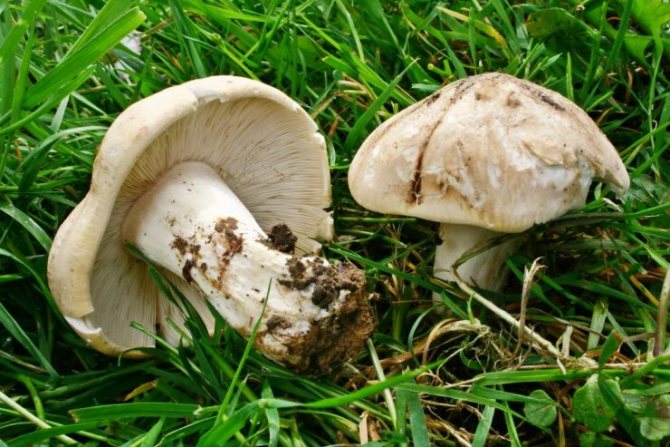

Most of the species can be found in coniferous forests. Rare species prefer to coexist with oak, beech, ash, poplar, birch.
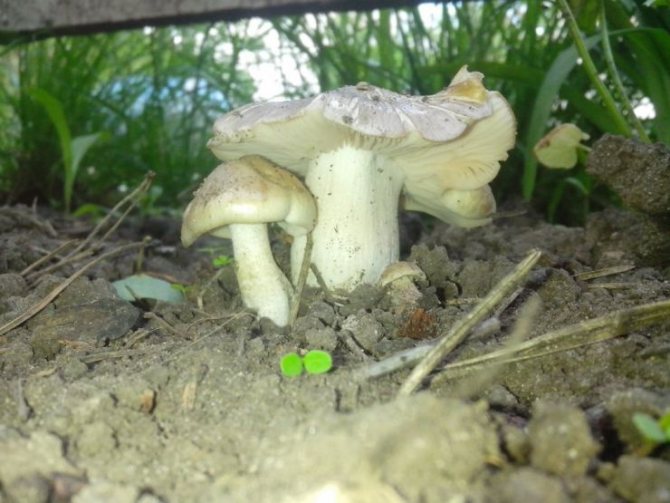

Even less often, they can be found in areas with fruit trees. Some can be found on your lawn. These representatives include mushrooms in May.
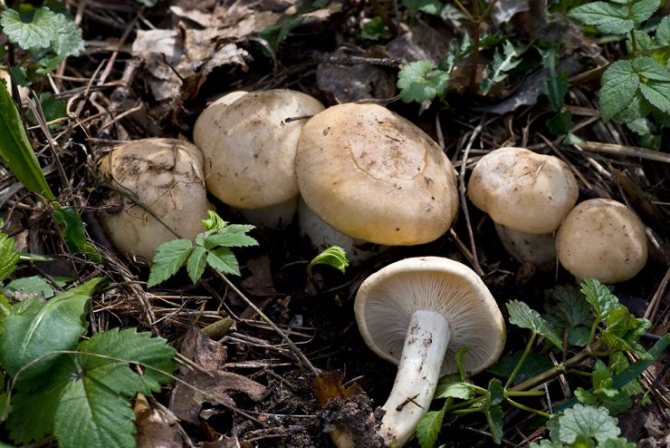

Distribution and when to collect
The bicolor or purple-footed row loves to grow in rich alkaline soils. In Russia, it can be found in meadows, forest clearings, along river banks, in pastures, or in an area of abandoned agricultural land. Grows in large groups, often forming "witch circles". The purple-legged beauty is also common in the European part of the world, it is found on the American continent.
The season of active fruiting occurs in the autumn. Experienced mushroom pickers advise harvesting purple-legged ryadovka in dry weather.
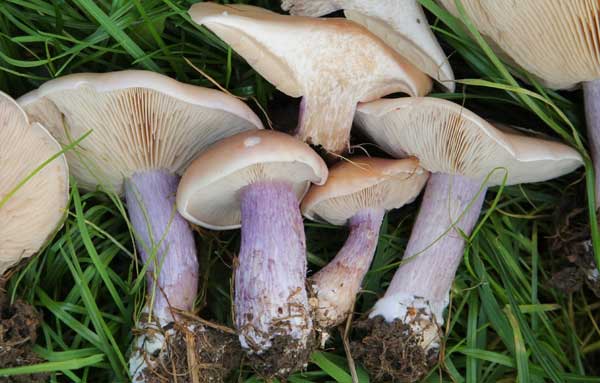

Photo of ryadovka mushroom
Beneficial features
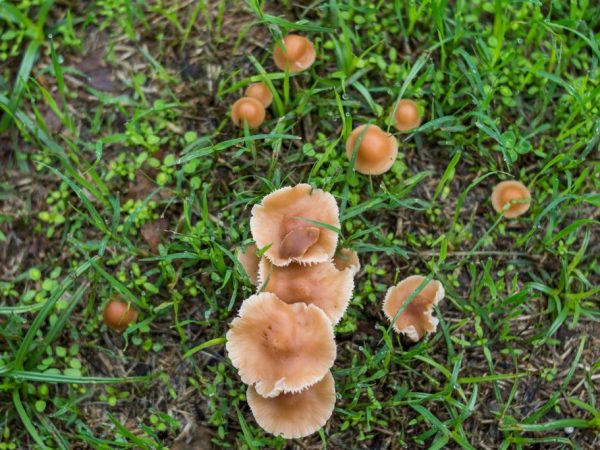

Mushrooms can lower blood cholesterol levels
Representatives of different species belonging to the Ryadovka genus contain vitamins A, group B, PP, E. The pulp contains thiamine and riboflavin, as well as useful trace elements calcium, magnesium, potassium, sodium, copper, phosphorus, zinc. Chitin and fiber contained in the cell walls cleanse the intestines from toxins.
Forest gifts are not a low-calorie product, they are quickly saturated. For 100 g from 30 to 40 kcal. There are almost no fats and carbohydrates in the pulp, most of the mass is water and protein. Forest species contain all types of amino acids (including irreplaceable ones) that a person needs for normal life.
Rowing mushrooms with regular use:
- strengthen the immune system;
- lower the level of cholesterol in blood vessels;
- improve vision;
- work as antioxidants;
- lower blood sugar levels.
Helpful hints and tips for collecting and post-processing bruises
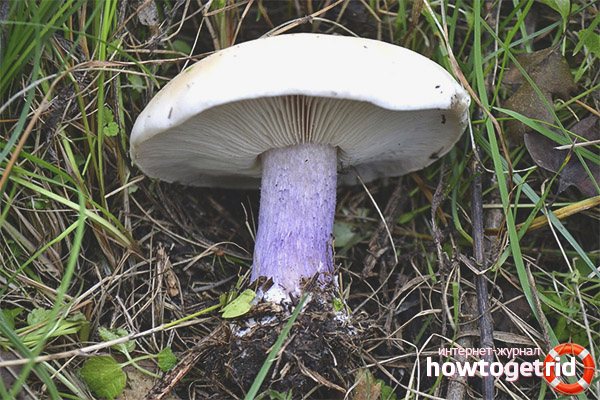

- It is better to search for mushrooms for collecting lilac-footed rows in open sunny glades, since this species practically does not occur in the thick of the forest.
- When picking mushrooms, it is better to immediately pre-process the mushroom (cutting off the lower part of the leg) so as not to do this at home. Then it will take much less time to process the mushrooms.
- It is better not to try raw mushrooms, despite the fact that the bruises are edible, they can be poisoned, or this species can be confused with its poisonous counterparts.
- When collecting blue feet, be sure to cut off the lower part of old mushrooms - this is due to the fact that the spores in the lamellar body are not digested, which can lead to intoxication of the human body.
- Before you start cooking the bluefoot, the mushrooms should be soaked in cold water for how many hours - this will help to effectively remove sand, adhering vegetation, and leaves from the surface of the row. After soaking, the mushrooms are washed several times, only after that you can start cooking them (this means heat treatment).
- Before soaking the mushrooms, salt should be added to the prepared water, this is done in order to rid the fruiting body of the mushrooms from worms.
- For cooking, you should not use too old mushrooms or those rows whose fruit body is spoiled, it is better to throw them away immediately - this will help reduce the risk of possible poisoning.
bile fungus - description, types, toxicity of the fungus

